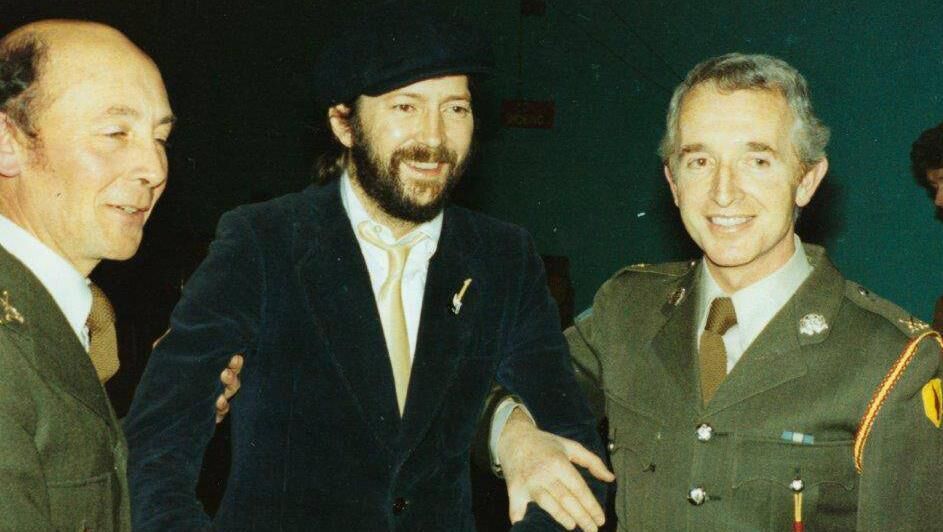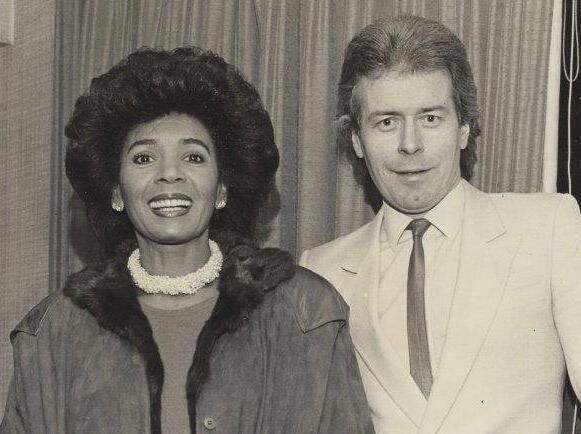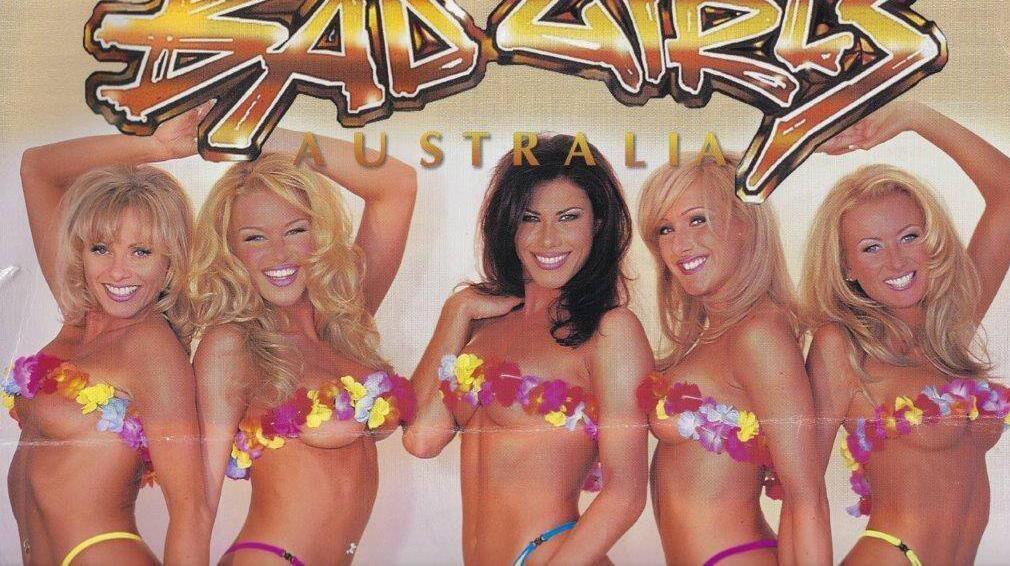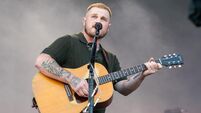Bob Marley, Queen, U2: Pat Egan reveals the most memorable gigs he organised

Pat Egan, centre, with Phil Lynott and Rory Gallagher: Both stars come across well in the promoter's new memoir.
Pat Egan, 75, has led an extraordinary life. He grew up penniless around Dublin’s Dorset St, cadging a living, having left school at 13 years of age. He never met his father.
“My father came home for one night after being away for four years during the second world war, and that was the night I was conceived,” says Egan. “He left the next day. We never heard from him again until the day he died in 1978.
“We discovered – when my sister went to England and met the landlady that he'd been living in digs with for thirtysomething years – that he didn’t have a friend in the world. He kept to himself. It wasn't like he ran off and had another family.”
Egan’s father worked for the RAF during the war. His family was told his father suffered collateral damage when there was an air raid on an airbase he was working on. He received a military pension; after he died, Egan’s mother also got a widow’s pension from the British government.

“He saved up about £70,000, which was an awful lot of money,” says Egan. “My mother used to say, ‘God, if he’d only sent home a few bob because it was very tough times in the early 50s bringing up four children.’ We only got away with not being put into a home because my grandmother was such a strong woman. She wouldn’t hear of her grandchildren being put in an institution.”
Egan was drawn towards the world of music. He made a name for himself as a DJ in Dublin’s beat clubs in the 1960s and as a music journalist with the iconic Spotlight magazine. In 1970, he opened Sound Cellar in Dublin city centre, the first of several progressive music record stores he owned, including four in Cork during the 1980s; 461 Ocean Boulevard in Queen’s Old Castle arcade, amongst them, the name a reference to Eric Clapton’s second album.
Egan got to know Clapton well, as he did a host of the music industry’s greatest stars throughout the 1970s and 1980s as a pioneering concert promoter, including Rory Gallagher, Shirley Bassey, Elton John and, of course, the comedian Billy Connolly, who has written the foreword for Egan’s captivating memoir about his life in showbiz.
- Pat Egan’s memoir Backstage Pass: A Life in Showbusiness is published by Red Stripe Press. The author’s royalties go to St Audoen’s National School, Merchants Quay, Dublin.

From 1977 to 1991, I was Eric Clapton’s tour promoter in Ireland. We did a tour in 1979 and he played a gig for the Irish Army at Collins Barracks in Dublin. That was during Eric’s drinking period. Eric didn’t know half the time whether he was in China or Tullamore. He was drinking a bottle of Brandy and more every day, which he did for seven years until it almost killed him. He’d start drinking in the morning at, say, 11 o'clock. Later that evening, there would be an oxygen tank for him at the side of the stage to sober him up before he performed.

One night, he wanted a table football game – one of those big tables with the small men on rods spinning around – for his hotel room. He was an addict of the game. We would have to have one of them in all his dressing rooms on tour. We’d bring it with in a van around the country. On this particular night, he wanted one in his hotel room when he came back from the gig.
We had to go looking for one at 11 o'clock at night. We got one. We brought it into Dublin’s Shelbourne Hotel. It was dumped on the floor. I rang his manager, Roger, in his room. I was delighted to say, “We got the football table for Eric.” He said, “Ah, he’s asleep.” He never played it after us paying over £1,000 for it.

One day in 1978, a polite blond kid called Larry Mullen dropped into my shop on Duke St. He asked if his band could support the Stranglers at a gig I was promoting at Dún Laoghaire’s Top Hat. I was aware of U2, but I was more interested in making sure the Stranglers sold enough tickets to make the gig work. I knew they needed a support act so I told him there was £50 in it if he wanted to take it. He really didn't care about the money. They just wanted to do the gig.
There was a couple of bottles of wine lifted out of the Stranglers dressing room before the gig. Adam Clayton was accused of taking the wine. I said, “Guys, forget about it. I'll get two more bottles.” But one of The Stranglers wasn’t happy. As the band were going on stage, the lead singer Hugh Cornwell shouted: “Tell those fuckers they will never open for the Stranglers again!” The night of the gig, I was preoccupied with whether fights would break out because it was that kind of gig. There was a few fights at the front door of the venue. You’d get guys coming along, trying to get in for nothing. If the bouncer said “Boo” to them, somebody would throw a punch.

Putting on Queen at the RDS in Dublin in 1979 was a big deal because the production was so big. Queen were always known for their lavish presentations. There was no other venue around at the time that was capable of taking big productions.
There wasn’t a stage at the RDS. We had to build one before the gig. It would have been, say, 80 feet long by 60 feet deep. The lighting rig was gigantic. They brought in 600 colour lamps with them. It was incredible. Nothing like that had ever been presented before in Ireland in terms of the size of the show. The venue had never been used before for a concert. It was really nothing more than an enormous cowshed. We made it work, but acoustically it was never made for music.
Even though the production costs were high – about £25,000, including £10,000 for Queen – we got 12,000 people at a fiver a head into it so it was a success. It was probably the forerunner for other super groups that came in after that like the Eagles and Bob Marley.
I negotiated with Bob Marley’s European promoter for him to do a gig in Dublin at Dalymount Park in 1980. The RDS didn’t want to take the gig because he was a Rastafarian. I told the European promoter we’d have to charge £10 a ticket for an outdoor gig, but he said: “No, Bob doesn’t like to over-charge for tickets.” We eventually agreed a ticket price of £7. Bob Marley was paid $60,000 for the gig, which was big money in those days.
The thing I remember most from the gig was the arrival of a couple of gangsters from a notorious Dublin crime family. They got backstage because the bouncers were afraid to stop them. Even though the bouncers were tough guys, they weren’t going to take them on. They wanted to see Bob. They had a present for him. The tour manager said, “Nobody sees Bob before the show. It’s not done.” Shamie Dunne [one of the criminals] had a whisper in his ear. About 10 minutes later, the tour manager came out and said: “Only one of you can go in – yourself.” So the mob boss went into Bob Marley and presented him with a package with about a pound of dope in it.
The gig was an enormous success. We took a lot of money on the day, which is unusual nowadays. We had a caravan outside Dalymount Park and I remember us putting all the notes into black, plastic sacks.

Bad Girls were a female version of the Chippendales. Another promoter had brought in an American girl group called The LA Centerfolds. I had seen them in Dublin’s Olympia. The place was absolutely jumping. The Bad Girls were a group from Australia’s Gold Coast so I said I’d give it a try. The Irish Star newspaper ran a story saying the strippers were coming to Ireland “to drive the men crazy”.
In Drogheda, we did a hotel gig. Hotels are not equipped for concerts. Usually the ceilings are too low and you can't put on proper lighting. We had to put in a stage of sorts. We were afraid that the guys in the audience would start climbing up on stage because the in-house bouncers that we hired – guys used to working the local late-night disco – were more interested in looking at the girls then they were in controlling the folks in the audience, which is perfectly natural.
Towards the end, the crowd started shouting, “Monty! Monty!”, as in “the full monty”. They wanted the girls to strip 100 percent. It was mayhem, with guys trying to touch or grab the girls on stage. Guys had to be pulled by the trouser legs and dumped on the side stage. Somehow we got through the night. The Bad Girls did fully strip for the very last 10 seconds of their show in Dublin. If you blinked, you would have missed it. They were afraid there was going to be a riot if they didn’t do it.
I did about 40 years promoting Billy Connolly, including the last live gig of his career at Dublin’s 3Arena in 2017. He played almost every hall in the country. If it was in Cork, it was in places like the old Savoy, Connolly Hall, the Opera House.
Billy was never a showbusiness personality although he became absolutely ginormous. He was an old hippie. He wouldn't necessarily go to a lot of trouble in the early days dressing up. He’d come on the same way as the Dubliners, wearing whatever he was wearing out on the street on stage. Later on, he became a bit more image-conscious.
He really was a banjo-playing folkie. He never had any VIP treatment requests. I probably picked him up about 30 times at different airports. He carried a little bag. He’d come through the “Arrivals” with all the other punters. In one case, I remember in Cork where he said, “We’ll go into the coffee shop, Pat. I have to have a scone and a coffee.” He was an expert on scones.
You never got that with any other artist. Most of them would barely say “Hello” to you and they’d have an entourage. Billy always come on his own. He came from that folkie background. He would have been worried about what Ronnie Drew thought of him for having a bodyguard or driving in a limousine. He wanted to keep that down-home folk credibility.





